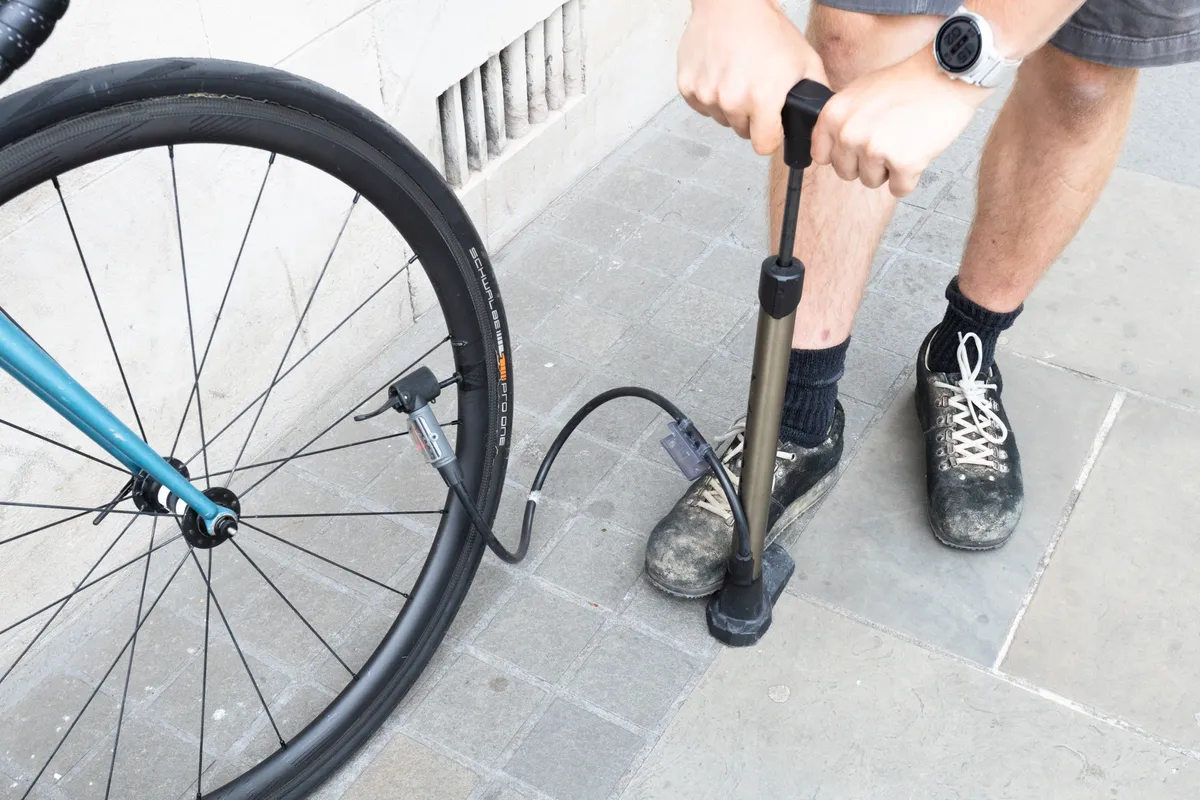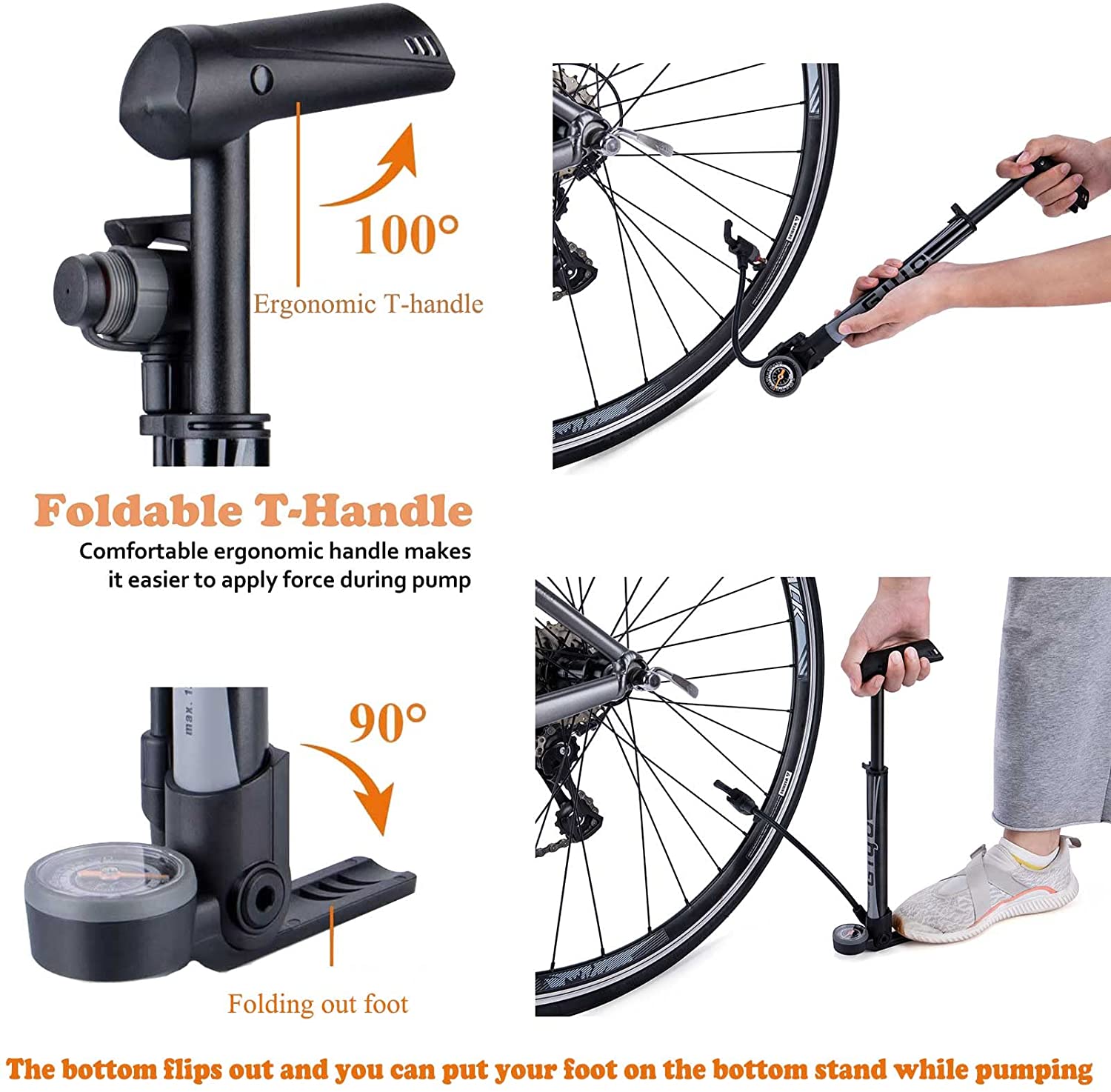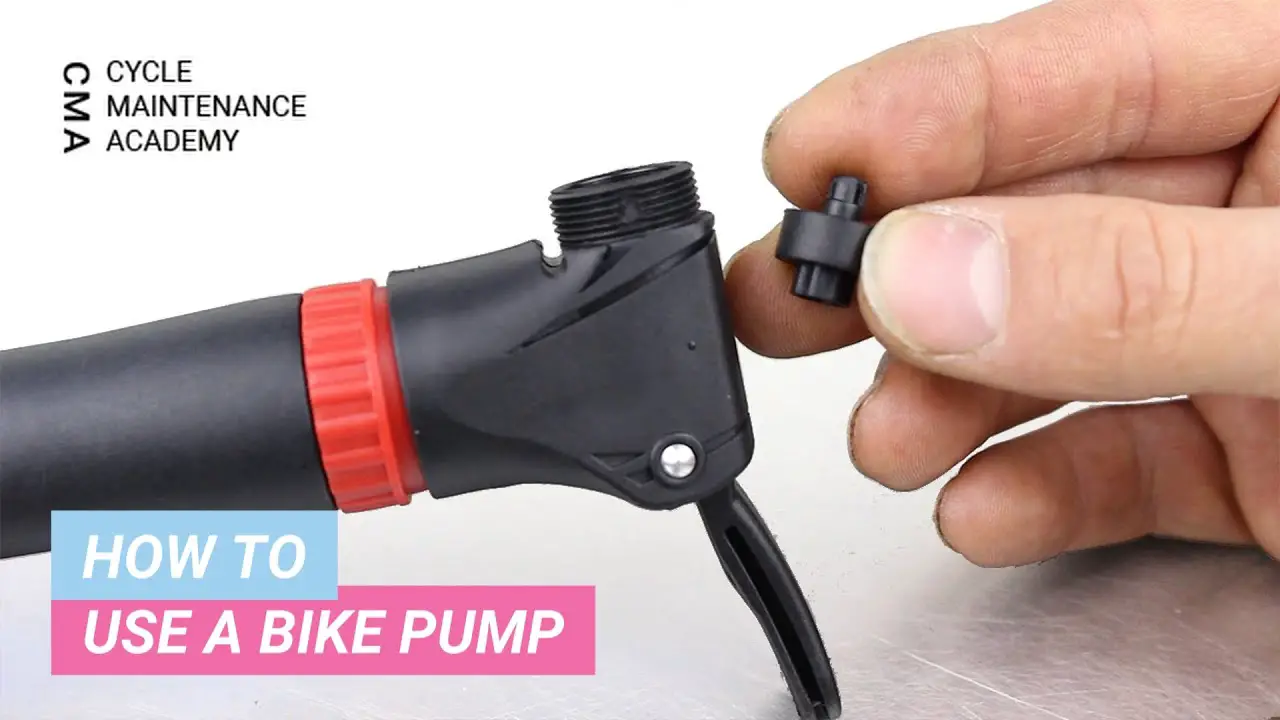To use a bike pump, attach the pump nozzle to the tire valve, then pump until the tire is properly inflated. Check the pressure with a gauge.
Proper tire inflation is crucial for a smooth, safe ride. A bike pump is an essential tool for maintaining optimal tire pressure. Knowing how to use a bike pump ensures your tires are always ready for the road or trail.
This guide will help you master the basic steps. From attaching the nozzle correctly to achieving the right pressure, you’ll gain confidence in maintaining your bike.
Regularly checking and inflating your tires can extend their lifespan and improve performance. Read on to become proficient in using a bike pump, ensuring every ride is efficient and enjoyable.
Choosing The Right Bike Pump
Bike pumps come in different types. The most common ones are floor pumps and hand pumps. Floor pumps are sturdy and fast. Hand pumps are small and portable.
There are also CO2 inflators. These are quick but need cartridges. Choose a pump that fits your needs.
Some pumps have a pressure gauge. This shows how much air is in the tire. Look for a pump with a comfortable handle. A stable base helps to keep the pump steady.
Pumps with a long hose are easier to use. Check if the pump works with both Presta and Schrader valves. This makes the pump more versatile.

Credit: www.bikeradar.com
Prepping Your Bike
Properly using a bike pump ensures your tires are inflated correctly. Start by matching the pump head to the valve type. Pump until reaching the recommended pressure for a smooth ride.
Checking Tire Pressure
First, make sure your bike is on a level surface. Look for the valve on your tire. Use a pressure gauge to check the tire pressure. The recommended pressure is usually written on the side of the tire. If the pressure is too low, you need to pump the tire.
Inspecting The Valve
Locate the valve on your tire. There are two main types of valves: Presta and Schrader. The Presta valve is thin and has a small screw on top.
The Schrader valve looks like a car tire valve. Make sure the valve is clean and free of debris. This helps the pump work better.
Attaching The Pump
First, find the valve on your bike tire. There are two types: Presta and Schrader. Make sure your pump fits the valve type. If it doesn’t fit, use an adapter.
Open the valve cap carefully. Place the pump head on the valve. Push down firmly to secure it.
A tight seal is important. Check that the pump head is not loose. A loose pump head will let air escape. Hold the pump and valve together tightly.
Pump the handle up and down. If you hear air escaping, stop. Adjust the pump head and try again. Always check for a secure fit.
Pumping Techniques
First, find the valve on your bike tire. Unscrew the cap and attach the hand pump. Hold the pump and the tire steady. Start pumping by moving the handle up and down.
Make sure to pump until the tire feels firm. Be careful not to overinflate the tire. After pumping, remove the pump and screw the cap back on the valve.
Place the floor pump on a flat surface. Attach the pump head to the valve on your tire. Step on the base to keep the pump stable. Start pumping by pushing down on the handle.
Use both hands for more power. Pump until the tire reaches the right pressure. Use the gauge on the pump to check the pressure. Remove the pump head and replace the valve cap.
Monitoring Tire Pressure
A pressure gauge helps you check tire pressure. Attach the gauge to the tire valve. Read the number on the gauge. This number shows the current tire pressure.
Make sure the gauge is working properly. Sometimes the gauge might give wrong numbers.
Every tire has an optimal pressure level. Check the side of the tire for this information. It is important to keep your tires at this level.
Too much pressure can cause the tire to burst. Too little pressure makes biking hard.

Credit: www.femmecyclist.com
Detaching The Pump
Detaching the pump involves releasing the valve lever and gently pulling the nozzle off the tire valve. Ensure the valve cap is securely replaced to prevent air leaks.
Removing The Pump Head
Hold the pump head firmly. Gently pull it away from the valve. Make sure to pull straight. Twisting can damage the valve. Keep a firm grip on the valve stem.
Avoiding Air Loss
Quickly cover the valve with your thumb. This helps prevent air from escaping. Ensure the valve cap is nearby. Screw the valve cap back on immediately. This secures the valve and prevents leaks.
Post-inflation Check
Ensure you have the correct tire pressure. Use a pressure gauge to measure it. Compare it with the recommended levels. If the pressure is too low, pump more air. Too high? Release some air until it is correct.
Check for air leaks around the valve. Listen for a hissing sound. Apply soapy water to the valve. Bubbles mean there is a leak. Tighten the valve if needed. If the leak persists, you may need a new valve.

Credit: www.cxwxc.com
Maintenance Tips
Always store your bike pump in a cool and dry place. This prevents rust and damage. Avoid placing it in direct sunlight. Sunlight can weaken plastic parts. Keep it away from moisture. Moisture can cause metal parts to rust.
Regular cleaning ensures smooth operation. Wipe the pump with a clean cloth. Remove any dirt and grime. Lubricate the moving parts.
Use a light machine oil. Avoid over-lubricating. Too much oil can attract dirt. Keep the hose clean. A clean hose ensures better air flow.
Frequently Asked Questions
How Do You Use A Basic Bike Pump?
Attach the pump to the valve. Secure it tightly. Pump the handle up and down. Check tire pressure. Detach and store the pump.
Should The Lever Be Up Or Down On A Bike Pump?
The lever should be down to secure the pump to the valve. This ensures efficient and proper inflation.
How Do You Use An Air Bike Pump?
Attach the pump nozzle to the tire valve securely. Pump the handle to inflate the tire. Check pressure with a gauge.
How Do You Use A Gas Bike Pump?
Attach the pump nozzle to the valve. Lock it in place. Pump until you reach the desired pressure. Remove the nozzle.
How Do I Use A Bike Pump?
Attach the pump to the valve, then pump until the tire is firm.
Conclusion
Mastering the use of a bike pump is essential for every cyclist. Regularly check tire pressure to ensure a smooth ride.
Practice makes perfect, so don’t be afraid to pump your tires often. With the right technique, you’ll be ready for any biking adventure.
Happy cycling!

Steven is a professional cyclist and his passion is cycling. He has been cycling for the last 6 years and he loves using bikes while outing as well. Based on his experiences with the different types of bikes; he is sharing his opinions about various bikes so that a beginner can start right away. Find him on Twitter @thecyclistguy Happy Biking.


Leave a Reply